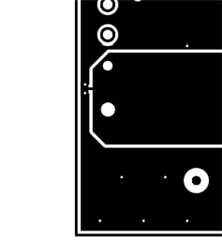Other Parts Discussed in Thread: BQ76952,
I connected the evm with a real 16s Li-ion battery. Since I wanted to charge or discharge with around 10A, I prepared CFET and DFET connected in series outside the EVM,
removing Q7, Q8 and R30 (current sensing resistor).
I put the BAT- and the BAT+ to J1/J3. The 16 cell monitor signals was placed in a connecter which can be directly fixed on the J23 and J14 of the evm removing the shunts for the simulator.
All went well and after I tried discharge for a few minutes, the battery had been placed in charge mode for several hours at 6.5A (limited by the capacity of current source).
There had been no problems. When I stopped charging (charging cable is removed) and tried to plug off the connector over J23/J14 pulling out lower voltage side first (
It was not possible to lift at the same time), I heard BUM! and saw a flash. ( BAT+ and BAT- is stll attached)
After inspection I found connection point of Vss and BAT- is broken. The cpu is broken (Vdd - Vss has no resistance) , and BQ76952 was broken also ( TP2(BAT) showed
only 2V, giving 60V at BAT+ and no sign of REG1 REG2).
I have no idea what has been wrong. Please give me any hints that cause this situation.
Thank you in advance,
Junkichi



